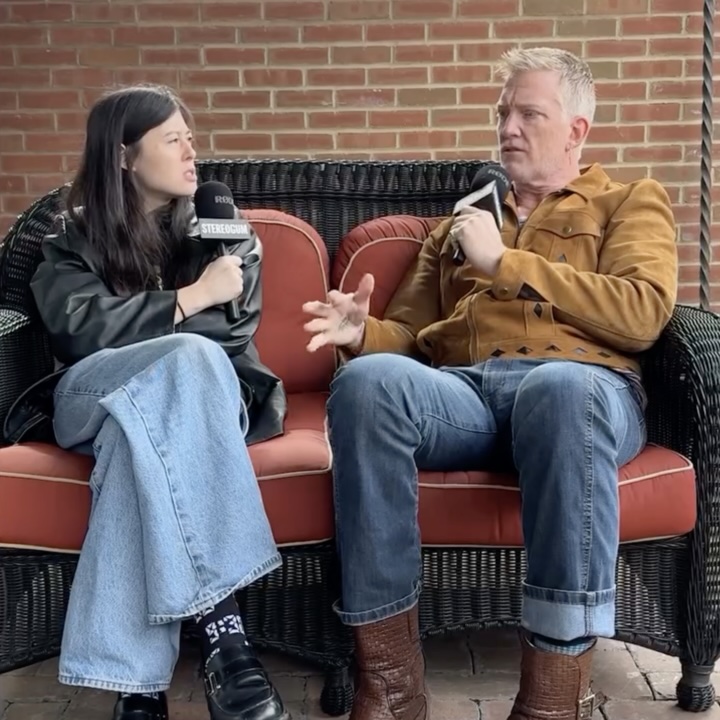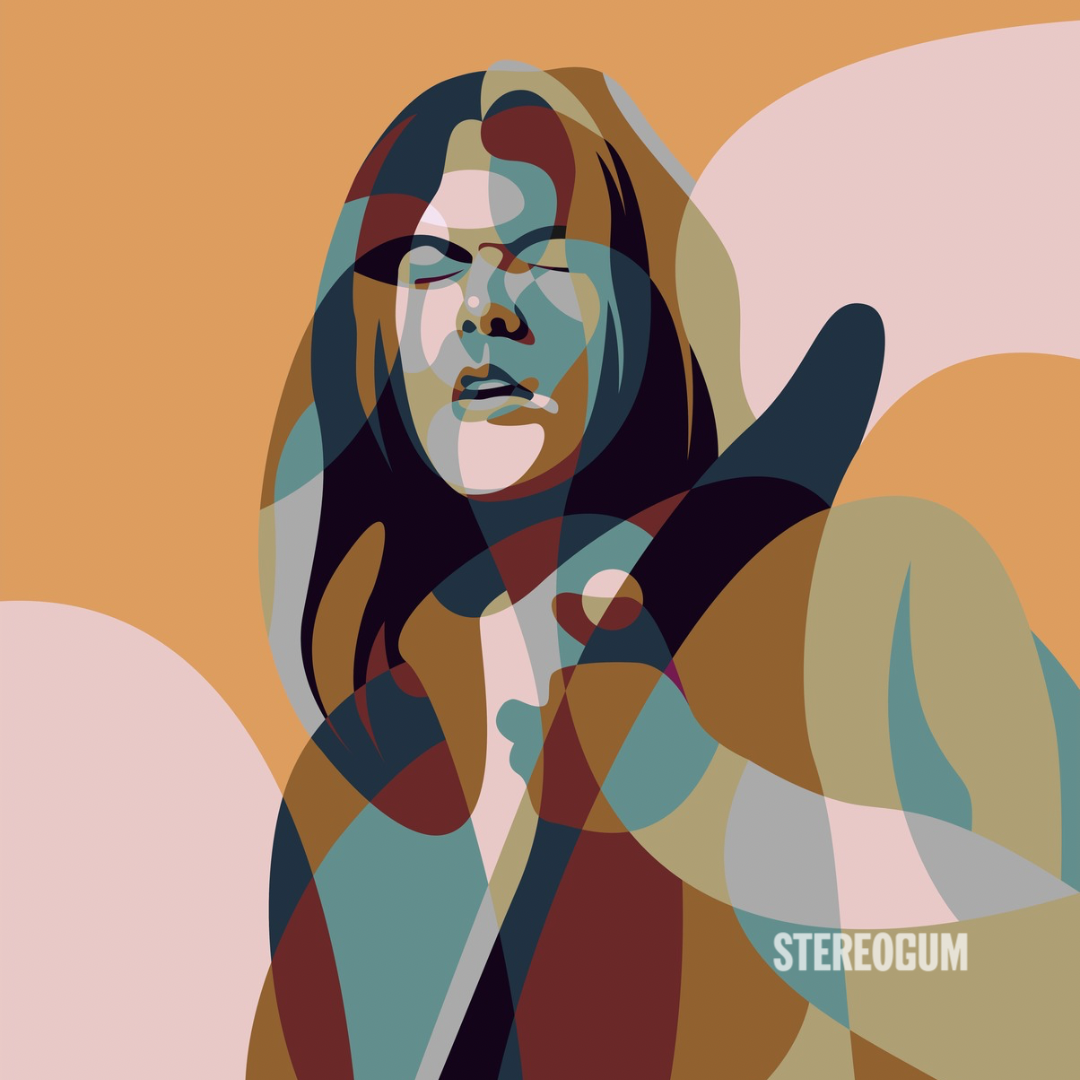Since its inception, Fever Ray has been as much of a visual project as it has a musical one. Karin Dreijer -- who makes up one half of the legendary Swedish duo the Knife -- introduced her solo endeavor in 2009 with a self-titled debut album. Fever Ray introduced us to Dreijer's spectral new persona; draped in black, her face painted stark white, she stared out from a press photo with arms outstretched. She looked like a witch, the guardian of some underworld beckoning us down into it. Fever Ray confronts themes of domesticity, family, and motherhood, its tone is often tender and, occasionally, caustic. When Dreijer accepted an award for the album at the P3 Guld ceremony in Sweden, she walked onstage in a bright red robe that covered her face. As she pulled the fabric off of it, the audience was greeted by prosthetic work that made it appear as if her face was melting off.
Eight years after Fever Ray, Dreijer announced a new album titled Plunge by way of teaser video. "WELCOME TO KARMA KINKSTERS," the video initiates, before a personal ad appears on the screen: "Sadist, empathetic switch seeks same. For hours and hours of sharing: ideas, skin warmth, breath, politics, dreams, and body fluids." The creator of this advert is a figure zipped into white rubber wearing a mask, a character that has surfaced throughout the press cycle for Plunge and re-surfaces in all of the music videos we've seen tied to the album. "Let's embrace our deepest fears together, let's throw ourselves into whatever is out there waiting for us," the figure continues typing. "Let's yes to all."
This short advertisement is a statement of purpose, a lens through which to read Plunge. It is an album that attempts to dissolve binaries and confront normative sex practices head-on. "This country makes it hard to fuck!" is the queer rallying cry heard on "This Country." And as much as Plunge is about fucking as a means through which to dismember patriarchy, it is also an album about love; the way we show it to one another, the way we show it to ourselves, the long and arduous road we follow to figure out what that word even means. The music Dreijer makes as Fever Ray and the Knife is often steeped in feminist and queer theory, but that theory is most always intertwined with the personal. In the eight years between Fever Ray and Plunge, Dreijer divorced and dropped Andersson from her name, she started dating again as a queer person, forced to confront the way a hetero-dominant society expects people to give and receive pleasure. “I get very tired of people saying: ‘Oh you’re safe now, you’re equal, you’re allowed to marry,' but I don’t want to marry, I want to fuck!" she said in one interview published around the time of the album's release.
To realize the visual world of Plunge, Dreijer enlisted her friend and collaborator Martin Falck as creative director. Together, the two discussed the album at length and wrote storylines for the latest Fever Ray music videos, taking care to keep the mood playful while still sharing some profound thoughts on gender and sexuality with their audience. When I Skyped with the two artists at the end of last year, Dreijer and Falck chatted about their collaborative creative process and some of the big concepts they sought to address in these visuals. Fever Ray will embark on a series of North American tour dates this spring; read our Q&A and watch the brand new video for "Wanna Sip" below.
[videoembed size="full_width" alignment="center"][/videoembed]
STEREOGUM: It’s clear to me when I watch the “Wanna Sip” video that it’s a continuation of the “To The Moon And Back” and "Mustn't Hurry" videos. The location is very stark -- what building was this shot in?
KARIN DREIJER: It is the national post office. It was built in 1980. It was like a super modern post service building. The Swedish government, they sold out the — what do you call it?
MARTIN FALCK: It’s like the “post terminal,” I think.
DREIJER: It used to be a state-owned post service. But they privatized it like 10 years ago or something. So quite recently they shut down that whole building.
FALCK: Usually, when you have these old government buildings, the politicians are very nice to us artists so they’re very nice about lending their space. Usually you can just sort of borrow it from them because they’re still being kept by using tax money. So there are a lot of people who sort of keep these houses intact and warm. For me, these buildings represent something old and a little bit socialistic and collective which doesn’t really exist anymore. The inside is so non-human -- it's very huge, very big. Because it is a government building, and they tried to add these sort of cute, funny-looking details. They tried to make you feel like you’re not in a prison or something.
STEREOGUM: When you came together to actually come up with the visual concepts behind this album, what were some of the things you were looking to for inspiration and what were the major themes you wanted to address in these videos?
FALCK: For me, the new Fever Ray album is very visual. I remember [Karin and I] talked a lot about the importance of having fun together without thinking too much about who’s gonna view it and what other people might think about it. Like to try to have this very inclusive, fun feeling.
DREIJER: And also trying to continue the stories from the album, from the lyrics. We started with these two characters. The trailers are sort of the first films that we did. So it starts with one character writing a personal ad and then the second character that we still call just, “The Monster,” is answering this ad. They meet up in the first video. There’s also this other characters in the video that is at this venue or club or whatever it is that they’re eating at. I think the story will continue. You’ve seen the “Wanna Sip” video, and that is sort of when the Monster and the first character is trying to create some — what do you call it — twosome relationship. Monogamous relationship.
FALCK: A claustrophobic one.
DREIJER: Yes. And the story will continue after this.
[videoembed size="full_width" alignment="center"][/videoembed]
STEREOGUM: How many more videos do you have planned?
FALCK: We have at least two more I want to make.
DREIJER: Every new story and situation, we get ideas of what should happen. So I think we could continue for a while.
STEREOGUM: As an outsider looking in and as a critic, I see these two figures -- what you described as the Monster and this other figure -- as these genderless beings. I read the videos as sort of a disruption of the binary, and I definitely hear that on Plunge as well.
FALCK: I think you’re totally right for as far as the visuals. Both me and Karin have been talking about this subject for a really long time. And I think in Sweden, these discussions have also been going on for a really long time. I feel in the video that it’s more that destroying boring or keeping away from normality is the norm. Do you understand how I mean?
STEREOGUM: The conversation you’re referring to in Sweden -- do you mean in terms of society’s relationship to sex and gender?
FALCK: Yeah, 'cause we have a term in Sweden, Normkritik. It’s very hard to translate this into English, I tried a lot of times. It sort of means that you’re critical to normativity in every aspect and [it asks that you] have a feminist approach, a queer approach. I feel like in the videos this is the [new] normal, it’s not like Utopian. This is the reality of this world. It has already destroyed everything [society considers “normal”]. Do I make sense?
DREIJER: We are already in another space in the videos, I think. But, Martin, when you talk about this Normkritik which directly [translates to] “Norm Critique,” it’s sort of a trendy word in Sweden at the moment. Like everybody wants to work with normkritiks. But saying that over and over again, it really takes away the edge of it, it’s not so avant-garde anymore. I still don’t think it exists. People like to say it, but it doesn’t really happen. I think the society in Sweden now is so binary. Who is really non-binary? Non-binary norm [is not the] norm.
FALCK: But that’s very important. When you work against these things, you can very easily create new norms and create new standards. I really hope these videos are a little bit confusing and make you really think -- they’re also criticizing the normkritiks.
DREIJER: It’s like we don’t want to suggest a new solution.
FALCK: Exactly, yes.
[videoembed size="full_width" alignment="center"][/videoembed]
STEREOGUM: Karin, I’m interested in the way you use the language of "the oppressor" to describe your personhood on this album. There’s a moment on “This Country” when you say, “The perverts define my fuck history.” That’s one of my favorite lyrics on the album. Pairing that line and lines like it with this new video makes me wonder how much exploration of kink and maybe elements of the unconventional was pointed. I’m thinking a lot about moments in the video like when the main character is urinated on, or in the new video when the leading character vomits into the mouth of the other character.
DREIJER: Those elements are super important. I guess those are things that even the normkritiks have a problem with -- like golden showers and throwing up in somebody else's mouth and stuff. It’s like...how should I say this so my kids' friend’s parents can read this interview? [Laughs]
This French writer/philosopher that we read a lot about during [the Knife’s] Shaking The Habitual, [Michel Foucault], has written so much about the politics of fucking, like how people have sex. It’s very political, it’s super important to understand the power structures. He writes about how everything comes down to how people are having sex and how people are enjoying their bodies and enjoying other people's bodies. Like there’s these ideas about how you’re supposed to have sex and how you’re supposed to enjoy your body and I think it’s super important to destroy all the ideas about sex as well. I think kink is super-duper-super important in that sense. I think it will be a super, super important thing in the revolution that must happen. I mean, we can’t change things, patriarchy will never be destroyed, if people continue to fuck the same way they do. But I think as long as people are having the sex the way people think is normal now -- like heterosexual sex — as long as people are having that kind of sex it feels like there will not be a revolution. Patriarchy is kind of built on heterosexual sex.
Foucault has written so much about this and a lot of it is very very difficult to understand, but the little that I have understood about this and that is really inspiring to me is to read about the power structures around sex. I think that has been very inspiring.
FALCK:. I don’t know how much I actually like that word, “kink,” because “kink” also has all its rules, like how it should be done and what it should look like. That’s also something we talked about so much when we said that we wanted to step into this world which plays a little bit with BDSM and in a commercial world how BDSM aesthetics are accepted. It’s black, it’s chains, it’s latex. It almost should look a certain way for everybody to be able to read it. We found this book really early when we started to talk which is called Dressing For Pleasure. It’s a collection of some of the first homemade BDSM and kink magazines from the UK where people [submitted] pictures of themselves with homemade outfits that they were just playing with. They could be an astronaut, they could be a firewoman, submarine captain — it was so much more playful and so unexpected and it felt like instead of sort of closing the subject off by using black latex and chains, it actually made you become curious and it was so much more fun to step into then be like, “If it’s really my interest, if it’s really something I’m into, what would it look like if I could just do it my way?” And that’s how you really felt with these images. For me, that was very interesting to just see that it was this expression and it was something that people were doing as a hobby and put so much time and effort into. Also, visually how you understood more where things came from. By being unclear, it made you feel more connected to it, if that makes sense.
STEREOGUM: I’m interested in what you just said about removing people’s expectations as to what “kink” looks like. If people are going to expect black, latex, and chains, give them white, rubber, and rope, right?
FALCK: Yeah, and I think that’s one of the things which I find really interesting about Fever Ray; the costumes, the mask, the hidden. You can play who you want, you can be angry, you can be a cosmonaut, you can be a nurse. You can just take on these roles by just playing out for people what they expect them to look like.
STEREOGUM: There’s a playful element to it. Karin, I’ll direct this question to you: Something I love about the Fever Ray project is that I’ll Google search images of you and I’ll come up with 25 different looks and some of the costumed figures who appear may not even be you physically. It’s such a wonderful disruption of the cult of personality, or celebrity culture, whatever you want to call it. When you perform this album will you wear a look similar to what's been displayed in these videos and in these visuals, or will you go for something else entirely?
DREIJER: I mean we will continue the story we started...don’t think I will say much more. [Laughs] It will be a logical continuation of what we started.

Fever Ray North American tour dates:
05/12 New York, NY @ Red Bull Music Festival New York
05/13 New York, NY @ Red Bull Music Festival New York
05/14 Washington, DC @ 9:30 Club
05/16 Montreal, QC @ MTELUS
05/17 Toronto, ON @ Danforth Music Hall
05/18 Chicago, IL @ Metro
05/21 Seattle, WA @ The Showbox
05/22 Vancouver, BC @ Vogue Theatre
05/23 Portland, OR @ Roseland Theater
05/25 Los Angeles, CA @ Hollywood Palladium
05/26 Oakland, CA @ Fox Theater
05/24-28 Bradley, CA @ Lightning In A Bottle Festival
Plunge is out now via Mute.






